Cosmetically this boat needs work, but structurally and functionally there are no significant problems that I know of. I am selling it in the middle of a refinishing project because at this point in my life I don't want to spend the time it would take to finish it.
The boat and motor have low hours considering it's nearly 50 years old. I am the third owner, and based on what I was told it was used for two weeks a year until it was abandoned in storage. During the 10 years I owned it, it has mainly been trailered a handful of days per year, but was left in the water for about three months one season. That was not a good idea since it caused gelcoat blisters.
When I first obtained this boat it had a standard bench seat setup. I added the two bucket seats, but found that if my wife and I both sat in the rear seats the front end bounced and slapped, resulting in a rough ride. To smooth it out required one passenger sitting in the bow. I did some experimentation and engineering calculations, and moved the seats and console forward about a foot and a half. This results in the boat being well balanced for two adults sitting in the bucket seats, and it planes well and fairly smoothly. It is, however, a light boat, and planing in waves gives a ride that is rougher than my wife likes, which is another reason we are getting rid of it. The 13' Whaler is a boy's boat. On smooth water with a single rider crouching on the floor I've clocked it at 27 MPH with my GPS. In waves at top speed it's as much fun as a jet ski.
The motor starts without a fuss and runs reliably. I've never had to work on the powerhead other than replacing the plugs and tweaking the mixture. It has a bad habit of stalling while idling up to a dock. (I'm told that this is typical for two-strokes of this size and vintage). Another quirk is that while on a plane it occasionally will start cavitating. Backing off the throttle for a few seconds will correct this. One last quirk that needs to be mentioned about this type of motor is that when shifting from neutral to forward or reverse, DO NOT feather it -- just jam it in gear. The gearbox has two dogs that engage the gears, and if you take your time engaging the dogs you will round off the corners, eventually it will start popping out of gear, and you will have to replace the gears. The current gears are in good condition. The motor has electric start but this model came without a charging system, so you have to use a battery charger. The battery has run the lights, depth finder, and starter for a week of vacation use without requiring a charge.
I checked the water pump a few weeks ago. The impeller looks fairly new -- the mold marks are not entirely rubbed off the ends of the arms. I drained and refilled the gearbox. The old gear lube was clear. The prop is very clean. It started without much difficulty, and I idled it in a trash can for a couple minutes.
The engine controls are original. The steering cable was replaced within the past 10 years and is in good condition. The wiring is original and in fair condition except under the console, which I rewired a couple years ago. The new ignition switch is a marine push-to-choke type mounted on the aft edge of the console.
I started refinishing the outer hull about four years ago and it has not been in the water since then. The bottom had a couple minor rock dings, some gel-coat blisters (mostly on the bottom near the back), and some crazing. I filled and faired the damaged areas with West System marine epoxy, marked the waterline, and put on one coat of Interlux Interprotect 2000E barrier paint. It really needs four coats of this stuff to protect against more gelcoat blisters. Since it took me four years to get this much done I decided I'd better let someone else finish this project. I left the waterline masking tape on. The yellow patches on the upper hull are marine epoxy that is a couple years old. I removed the rub rail. I kept the old rub rail, but it should be replaced once the hull is refinished.
The interior has some pretty serious gel-coat blisters in a few places. This resulted from the difficulty of keeping things dry when stored outside. The interior gelcoat and the woodwork both need to be refinished. The woodwork is sound except for a crack and some stripped threads where the console fastens to the side rail.
At some point in its history someone apparently rammed a pier and messed up the edge of the bow, then repaired the damage with some sort of Bondo. I did my best to smooth out that mess and fair it with marine epoxy.
Here is what I had planned on doing (before I realized that at my rate of progress it would take the rest of my life):
- Finish painting the outside of the hull. Below the waterline at least three more layers of Interprotect 2000E, in alternating coats of gray and white, should be applied. Above the waterline a marine topside paint is needed. Reinstall the fishfinder sensor (the manual describing the procedure is online). After completing this the boat could be put in the water.
- Fill the interior gelcoat blisters and paint the inside.
- Install a rub-rail.
- Refinish the woodwork.
Included:
- Two steel OMC five gallon tanks, probably original. The gas line is pretty new.
- 90 AH Duralast marine battery in a battery box. The date sticker says 3/06.
- Hummingbird PirhanaMax 15 fish-finder
- Two ridiculously small oars
- Anchor
- An old fire extinguisher, should probably be replaced
- Spare prop with a rough edge, but usable as a backup
- Trailer with spare tire and jack-wheel. The wheels and tires are no more than 10 years old and are in good condition. Bearings are OK. Lights work. Requires a 1 7/8" ball and a four-pin flat electrical connector.
- One ratcheting load strap
- Boat cover and tent pole. The boat cover is worn, faded, and has a couple tears. This cover tends to sag and catch water in the front when it rains, which makes it difficult to keep the boat dry during outdoors storage.
- A second 33 hp long-shaft motor for parts. The cylinders are frozen and it has no gearbox. The gearbox on the good motor came from the spare.
- A box of parts, some good, some bad (including a set of gears with rounded dogs).
- The old rub rail
- OMC parts catalog for the 1967 version of the motor, and a general OMC motor service manual
This boat is under 14 feet and does not require a title in Ohio. The good motor has a valid Ohio title. There is no title for the parts motor.
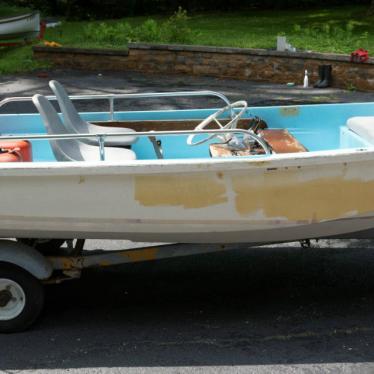

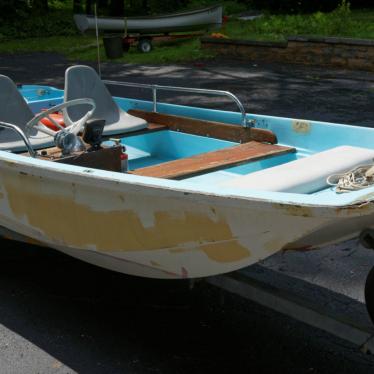
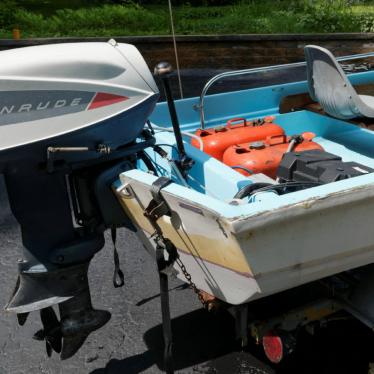
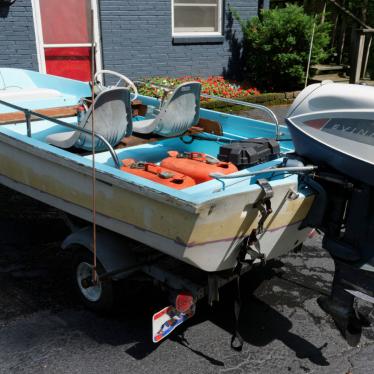
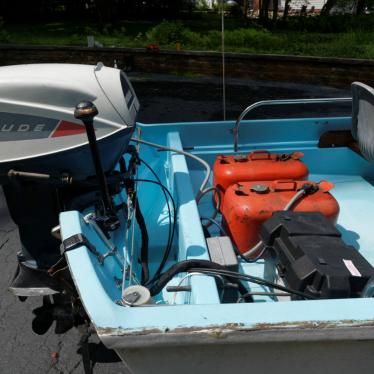

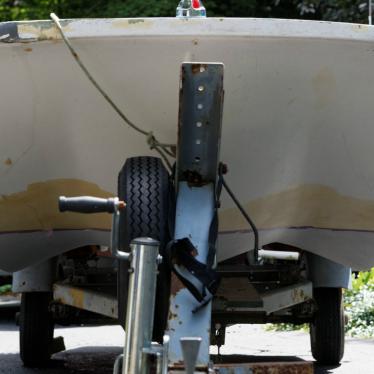
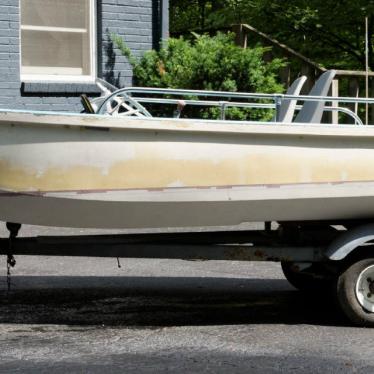
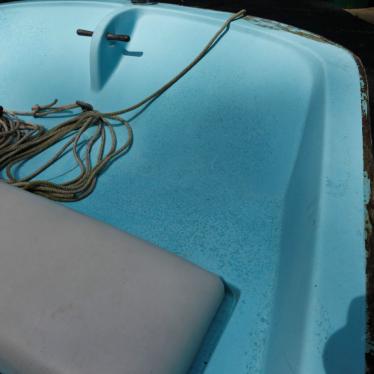
































Questions
Please let me know if this Whaler is still for sale !!
I am Extremely Interested in purchasing her !!
Please let us know either way.
***
or
***
call me re: if you are still selling the boat-
***
thanks
Still available?
Thanks.
Is this still for sale
Is this still for sale
Add new question to the seller